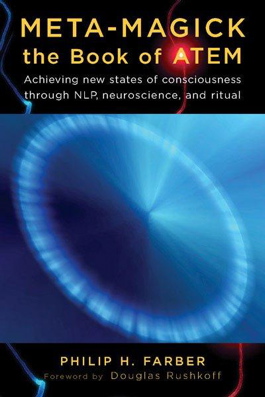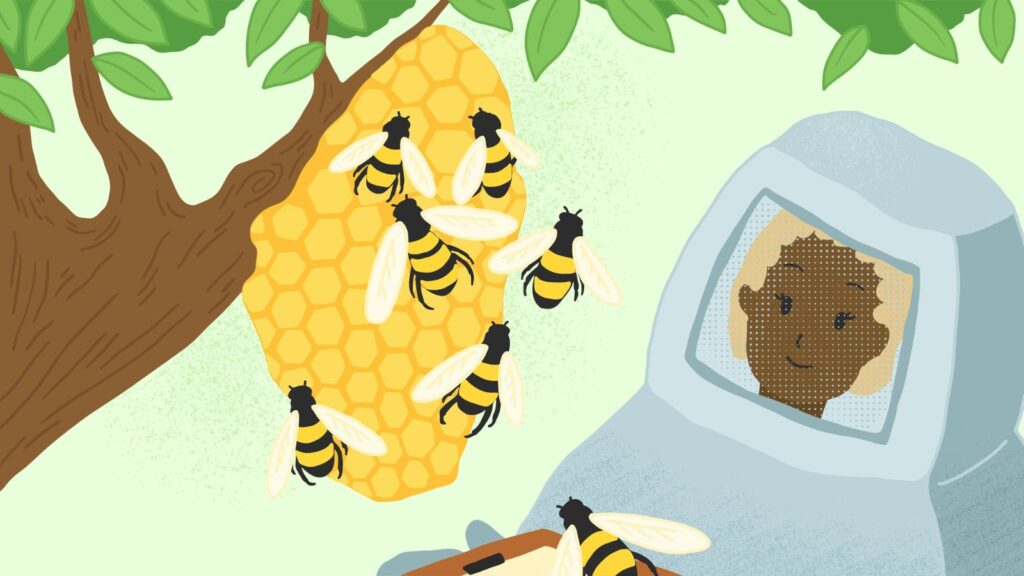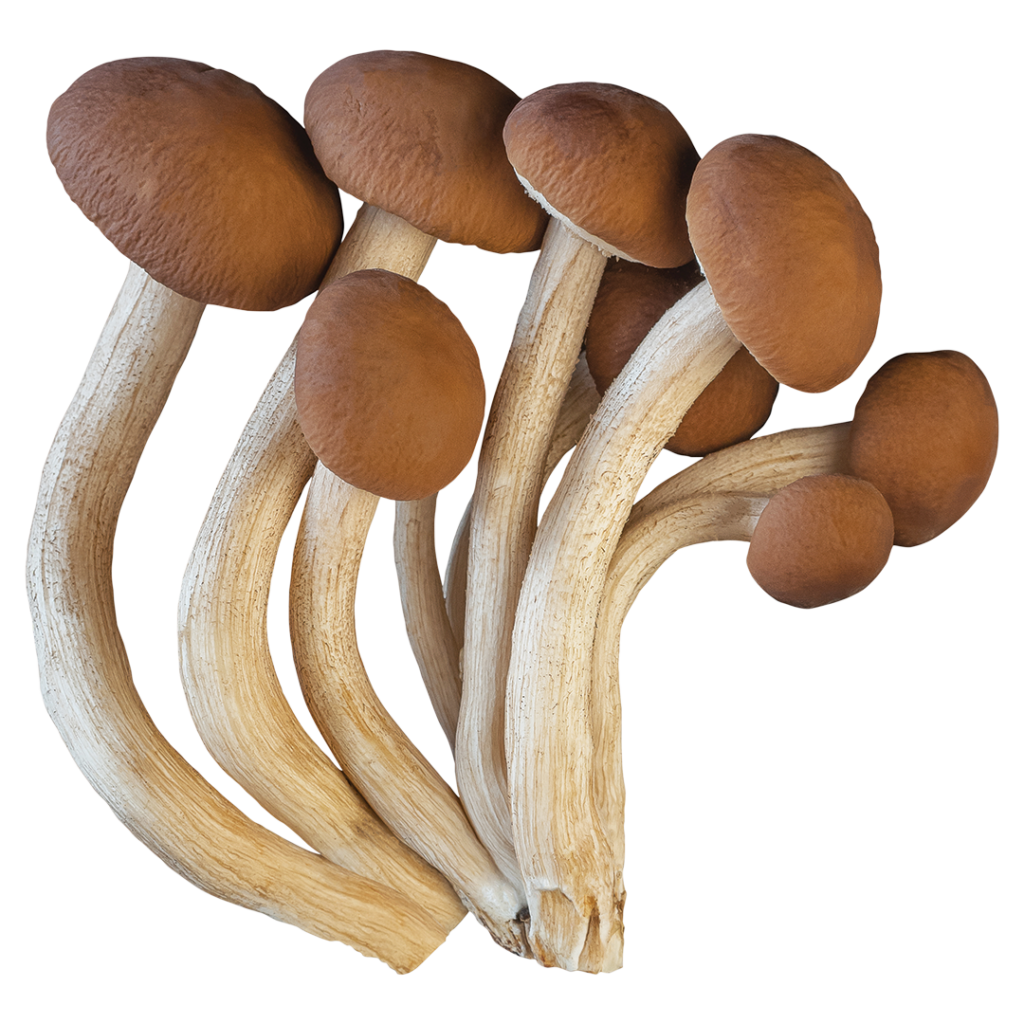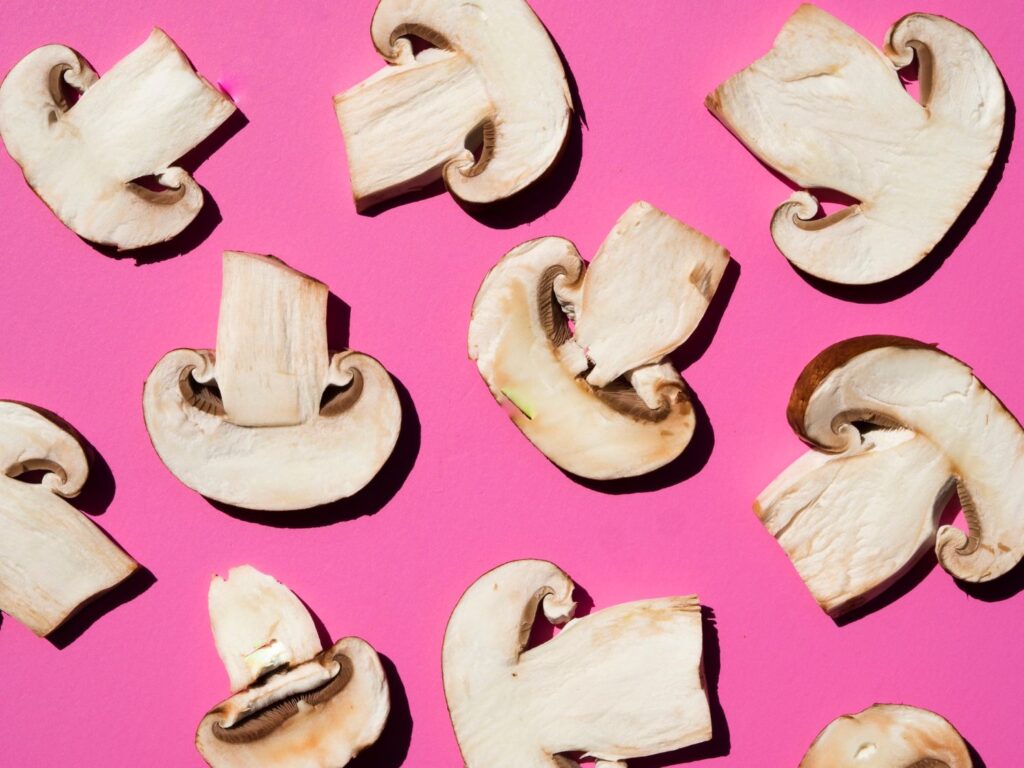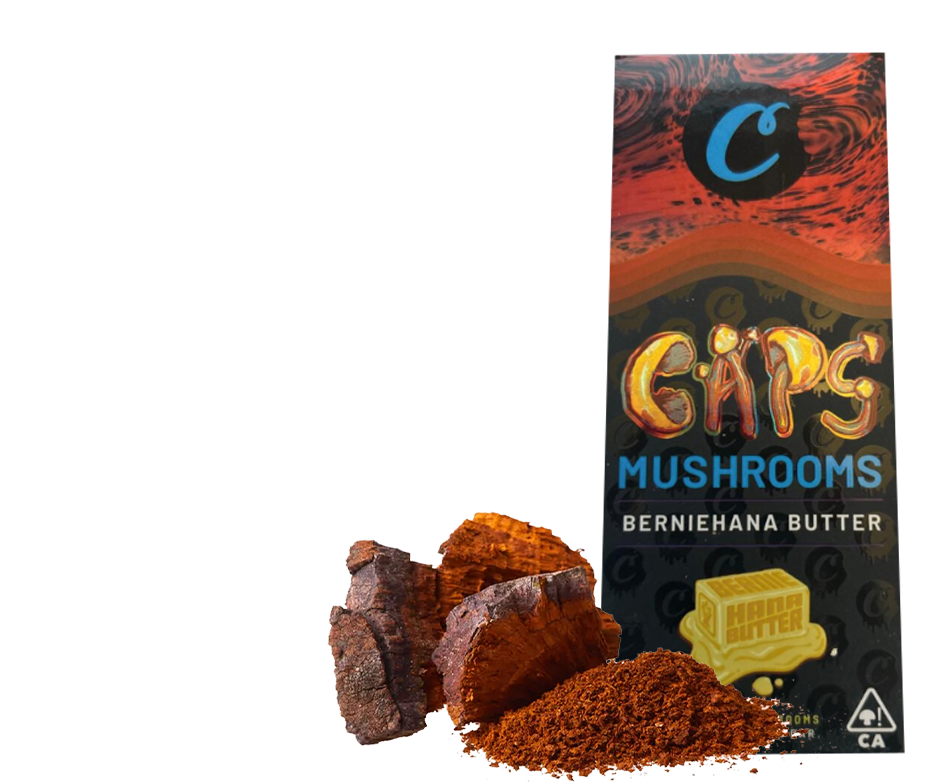This article is excerpted from Meta-Magick: The Book of
Atem, newly released by Weiser Books.
Foreword
by Douglas Rushkoff
I DON’T BELIEVE IN TRADITIONAL MAGICK. Nor should you — especially if you want to learn to practice it.
No, it’s probably easier just to get everyone else to believe in it. Then just proceed according to plan and watch the rest of the world conform to your intention.
Of course, that’s just fine for the independent wizard looking to manipulate his way to sex, power, and cash, but what about the person who sincerely means to make the world a better, more just, and pleasurable place for everybody? What about the magician who doesn’t simply want to gain a disproportionate share of existing stuff, but wants instead to change the very relationship of matter, energy, and abundance?
That’s the kind of person who should turn away from traditional ceremonial magick and turn instead to the work of Philip Farber.
Too many novice magicians explore the possibilities of their craft from the hopelessly closed mindset attending the zero-sum game. For them, magick is something one does all alone, for the purposes of improving, changing, or expanding the self. It’s no wonder. Like every other mind technology, from the Torah to neuro-linguistic programming (NLP), chaos magick has been co-opted by the self-help movement. As a result, instead of destroying the “self” so that the person can be liberated, most magick practices only reconfirm the specious boundaries defining selfhood, further trapping the magician in the realm of the already possible — and further isolating all magicians from one another.
As I’ve come to understand it, the intent of Farber’s ongoing literary sigil is to move his readers beyond the practice of individual magicks into the shared space of collective, consensual hallucination. Beginning with the invocation of a known and accepted personage, Atem, Farber quickly branches out in new directions, casting a visionary world picture as if it were a guidebook — a description and instruction manual to a realm that is quite literally created in the process of its depiction and subsequent imagination.
But Farber’s world picture is not a specific map of forces. Rather, it is a place where his readers are free to develop their own. It is a meta-landscape — a series of laws that are each invitations to create new ones. The only terra firma is the guarantee of access to this collective act of ongoing creation.
In this sense, Meta-Magick is truly a “meta” magick — a menu-to-menu creation, an open-source approach to magick that puts each participant in the role of contributor and propagandist.
Meta-Magick is an invitation to participate in several levels of practice: the remapping of one’s own mind, the development of memes that can be transmitted to others, the use of media, and the implementation of social change. It is a picture of a world in which we all contribute to the landscape and its bylaws. It is the world in which we live.
* * *
PART ONE:
Invocations and Simple Evocations
FIRST INVOCATION OF ATEM
ATEM IS A SELFCREATED ENTITY THAT HUMAN MINDS PARTICIPATE IN. It is created, most importantly, of thought, of the attention of anyone who considers Atem for even a moment. This may seem a novel concept, yet there is precedence throughout history. Schools of thought, political ideologies, religious beliefs, corporate structures, forms of government, and much else depend on the attention of humans to exist, and they have built-in abilities to perpetuate, to include more humans, and even to reproduce. These self-perpetuating thought-forms, for our purposes here, are called memetic entities. Democracy is a memetic entity, as are Aikido, Cognitive Behavioral Therapy, jazz, Buddha, Beelzebub, Sherlock Holmes, the English language, and Atem. They are patterns of information that act with autonomy across time and yet interact with humans on many levels. All of the given examples became manifest through the interaction of human minds — some, obviously, by an individual, others, less obviously, by changes in culture.
As Atem spreads, there will inevitably be debate about the level of existence of memetic entities. Some will point to these entities’ continued existence under many different names parallel to every era of human history, as we have just done. Some will claim they exist, but as blind, random events without autonomy. Some will claim that they are only imaginings and do not actually exist at all. Atem does not require belief to exist, only attention. Someone who specifically disbelieves in Atem will offer just as much attention energy to the entity, if not more — and the debate itself will fuel the existence of Atem and other memetic entities for years to come.
There is a special emphasis on the existence of Atem, his message, his function in the world. We are participating with Atem now because this entity opens the door to the realm of memetic entities. As you continue to read and to practice the exercises in this book, and as the mind of Atem becomes revealed, you will learn that memetic entities can come into being with ease by following a straightforward formula. Atem carries this message as content, as something you can read plainly in this book and, less apparently, as a way of thinking, a way of organizing the content of your experience so that these things become possible.
Atem is the Opener of the Way; his task is to create the possibility for a whole new pantheon of entities to come forth into the world. Each of us has the potential to engage in the art of bringing forth entities into the sphere of human awareness. Some may write books like this one, each with a new mind within it. Some may embody the entity in a work of art or in a performance. For some, the entity may be something that they teach face to face and pass along to the next person.
In order to teach these skills, Atem exhibits specific qualities that appear to us as analogous to personality traits in humans. Atem has a wide-ranging intellect that may incorporate information from just about any sector of the noosphere. He is very flexible in his behavior, and in his presence the quality of reality itself becomes flexible. This can make him seem to be a trickster, mercurial, hard to pin down. Results and desired phenomena may come by unexpected means. The method of contact with Atem may shift, change form, and offer surprises. Atem is sometimes seen as a virile young man holding a cat or a snake; or as an old man with a cane, his face and body hidden by a cloak; or as a woman about to give birth; or in many other forms. What remains constant, after careful consideration of the manifestation, is the presence of the Six Elements and Eight Powers. The Six Elements are: Attention, Language, Passion, Fitting, Trance, and Making. The Eight Powers are: Communication, Neuroplasticity, Transformation, Transmission, Beauty, Understanding, Balance, and Opening.
Thoughts and manifestations of Atem may occur near bodies of water in the sunlight, or in places that are sacred to computers and information technology, or where the setting sun shines through trees, or at night where people socialize and explore each other’s dreams and desires, or in any other place where the complexity of interactions reaches beyond the ability of a human’s conscious mind. Atem lives on the border of chaos, where the butterfly’s wings beat, where graphs become asymptotic, and where William Blake saw infinity in a grain of sand.
Atem is not here to save the Earth or unite mankind or to put health, wealth, and wisdom in your hand. Atem is here to Open the Way for the diversity of memetic entities who are capable of those tasks and much more.
It is important to remember that what you read here is not true. Nor is it false. It is, however, the way Atem thinks and relates to reality. Just as each human on this planet has a set of beliefs and conceptual filters that help them to define their abilities and limits, so too do memetic entities.
Notice that we do not attribute every idea in this book with academic verification. We do not cite sources (although there is a recommended study list of congruent information in appendix A). There is no need to “prove” these ideas; Atem is simply communicating the way that he thinks. On the other hand, the exercises in this book will demonstrate, within Atem’s mindset, the function and practice of these ways of thinking. The emphasis is on direct experience, which is the route to full understanding of Atem and Atem’s powers.
As with the beliefs of humans, the beliefs of Atem or another memetic entity may appear to be rational, irrational, or just what they are. Some are testable within our traditional consensus contexts, but all are true and testable — within the context of the entity’s reality. Just as we allow for the differing beliefs of humans, tolerance and patience for the differing ideas of Atem will allow you to eventually grasp the overall structure and context in which those concepts may be viewed as “true.”
Consciously, these are still just words. But read on.
SIMPLE EVOCATIONS
Basic Positive Resource Entity
1. Banishing: Imagine a circle around where you sit. Take a deep breath. As you inhale, let your awareness fill the circle. As you exhale, let your awareness contract to as small a point as you can, in the center of your chest. After five or six cycles of this, take a really, really, really deep breath, filling the circle with your awareness, then exhale forcefully and fully, letting your breath sweep through your personal circle, chasing out anything contrary to your purpose.
2. Evocation: Identify something in your life that makes you feel very good in some way. It can be a feeling of confidence, intelligence, satisfaction, arousal, intoxication, approval, or whatever you might describe as a good feeling. Pay very careful attention to how you feel, the structure of the feeling.
Where does the feeling start? What kind of feeling is it? Where does it go as it develops? Does it continue to move? Is it static? Follow the feeling through to its peak. Then ask yourself, “If this feeling had a color, what would it be?” Imagine the color (or colors) in your body in exactly the areas where the feeling is experienced. Then imagine that you are taking the colored shape out of your body and flip it around to face you. Place it on the floor outside your circle and breathe deeply, feeding the shape breath and energy on each exhalation.
Keep breathing and feeding it energy until it transforms. Once it has transformed, imagine you are communicating with it. Ask it what it wants to be called. Ask it what it can teach you that it has never before revealed. Ask it how you can feel really good more often. Find out whatever you can from it. Thank it for everything.
You can also ask this entity if it has anything that it would like to do away from your physical body, off in the external parts of consciousness. If it says that it does, then you can get an agreement of time from the entity-five minutes, an hour, a day, five years, or whatever time is appropriate to the task-and the promise from the entity to return to your physical presence at that time. Note down the time of the entity’s return so that you can take notice when it occurs.
3. Closing: Reabsorb the entity and anything else you may have created in your aura during this operation.
4. Repeat Banishing.
Transforming Negative Entities
1. Banishing: Imagine a circle around where you sit. Take a deep breath. As you inhale, let your awareness fill the circle. As you exhale, let your awareness contract to as small a point as you can, in the center of your chest. After five or six cycles of this, take a really, really, really deep breath, filling the circle with your awareness, then exhale forcefully and fully, letting your breath sweep through your personal circle and chase out anything contrary to your purpose.
2. Evocation: Identify something in your life that makes you feel bad in some way. This technique can be used even with major trauma. It is recommended, however, that you begin with less intense experiences until you develop proficiency. For your first time, think about something in your life that is mildly unpleasant-a situation with family members or coworkers that leaves you feeling annoyed, for instance.
Again, notice where the feeling flows in your body and mark it out with colors as you did for the good feeling in the “Basic Positive Resource Entity” exercise. Flip the shape around and place it outside the circle, in front of you, but this time trap it in a geometric shape of some kind, such as a triangle or square drawn (in your imagination) on the floor.
Keep breathing and feeding it energy until it transforms. Once it has transformed, imagine you are communicating with it. Ask it what it wants to be called. Ask it what it wants. Ask if there’s a way for it to accomplish its goal in a more pleasant manner. Negotiate. Find out what it can do for you that it hasn’t done before. Find out what you can do for it.
Keep breathing to feed it energy. It may transform again, if your negotiation is successful. If it does, flip it back around and draw it back into your body, in its original position.
If it doesn’t change again, you have a couple of choices:
(1) draw it back into yourself, but reversed from its original position, or
(2) breathe and draw some energy from it with your inhalation until it has diminished somewhat, then reabsorb it back, flipped around, to its original position.
3. Repeat Banishing.
Attention
“A path is formed by walking on it.”
-CHUANG TZU
IN THE WORLD OF ATEM, EXISTENCE IS DEFINED BY ATTENTION. Everything that exists, exists in consciousness as a collection of perceptual bits, gathered by attention. When you look, listen, feel, taste, and smell, the record of that experience becomes data for the mind-data that can be recalled or recombined. Whether or not an actual, objective, external reality also exists is irrelevant to Atem; the world that humans and memetic entities live in is the one mediated by perception and the mind.
We can think of our conscious minds, the ostensible engines of perception, as a flashlight in a very huge, dark building. Level upon level of experience awaits us in that building, opportunities for countless experiences of perception, but our flashlight can only illuminate a very small circle at any one time.
Even the tiny portion of the world illuminated by that flashlight glimpse is loaded with potential sensory experiences for which humans are ill equipped. The only way we can observe most of the electromagnetic spectrum, for instance, is with instruments. Our instruments, as amazing as some may be, can detect only those things that we can conceive of, those ways of experiencing that we can imagine. Atem tells us that there are many, many more ways of experiencing than humans have yet imagined. If we imagine another way of experiencing, then suddenly a new realm of reality is opened to us. Was it real before we imagined it?
Zen amateurs question the existence of falling trees in hypothetical forests, and by doing so give existence to all such remote trees.
Our perceptions, thoughts, and memories come in modalities that we are very familiar with. The senses — visual, auditory, kinesthetic, olfactory, and gustatory — pretty much describe the whole range of things a human can experience: what we can see externally and what we can visualize internally; what we can hear with our ears and what sounds, voices, or music we might hear in our heads; the things we can touch or bump up against and the feelings that tell us about emotions; tastes and smells perceived, remembered, and imagined. Even in the depths of mystical experience, the mind brings back the ineffable with descriptions of light, harmony, the kinesthetics of wonder, and synesthesia of every kind. These may be awe-inspiring experiences, but to describe them, to recall them, they must be reduced through the filters of perception and language to the sensory units that human consciousness can deal with.
Each sense comes in infinite variety. Not only can each sense be internal or external, but each is also subject to description by location, motion, direction, and size. Vision may be described with qualities such as brightness, hue, saturation, and contrast. Hearing may have qualities such as volume, tone, pitch, rhythm and so forth. Feeling may be described with terms including pressure, temperature, intensity, sharpness, dullness, etc. Taste and smell are possessed of pungency, sourness, sweetness, and so forth. (See appendix B, “List of Submodalities.”)
When we begin to think about how humans organize thoughts, we may notice that any of these kinds of perceptions can be located pretty much anywhere in the body-and very often outside the body as well. When visualizing a remembered scene, only a few people will actually place the mental image inside their own heads. Most of us see the imagining as a tableau somewhere in space, usually spread out in front of us. It is significant to our thought processes whether a recalled image (or sound or feeling) is found in a particular location, whether or not it is dark, light, harmonious, discordant, smooth, rough, or whatever. While this is usually an unconscious process, we do often note it in our speech: “I had that in the back of my mind.” “Now that we have all these choices in front of us . . .” “It’s over my head.” “I was totally wrapped up in it.” “What a pain in the ass!” “That’s rough!” “You have a bright future.”
The narrow flashlight of consciousness can illuminate a portion of this experience at any one time — and the unconscious mind continues to sort and order thoughts in this way all the time. Each of us moves through our day in a cloud or web or vortex or grid of sensory details, a continually interacting flow of external awareness, associations and memories, imaginings and projections, feelings and emotions. Sometimes we are aware of one small part of this flow, sometimes we are aware of another. Some of us have large, grand arrays of sensation. Others have narrow, dull collections of thoughts and images. Some of us scatter our attention through the space of a large building. Others contain their attention within a cozy little cocoon. And, of course, every other permutation that you can think of-and probably some you can’t. The way that attention is arrayed through and about the body will contribute to aspects of our personality, mood, philosophy, preferred modes of cognition, and much else.
Things that we generally consider as “real” exist only as perceptual data that is interpreted by consciousness. And things that we generally consider as “imaginary” also exist only as perceptual data that is interpreted by consciousness. The mind will react to internal perceptions much as it does to external ones. Consider how a memory of something painful can still make you wince or how a joyous memory can bring a smile to your face. Remembering the face, the tone of voice, or the touch of a lover can cause arousal. Hearing a song played or the punchline of a joke told in your mind can make you cry or laugh.
Attention can be directed toward something in a variety of ways. You can look at, listen to, touch, taste, or smell something directly. You can imagine something that is not present or not strictly physical-for instance, a concept, philosophy, or memetic entity. You can make symbolic offerings to something, of food, beverage, money, breath, or anything else of value to you. You can describe something, or appeal to it with language-or conversely, read, listen to, view, or otherwise pay attention to a description encoded in language.
DAY ONE: ATTENTION/ATTENTION
HOW WE DIRECT OUR ATTENTION can determine our present experience. This principle can be tested experimentally in a variety of ways. The following three exercises demonstrate how simple changes in attention engender changes in the external consciousness.
Forward/Backward Thinking
1. Person A holds out an arm, fully extended, palm facing forward. Person B holds hands up in front of his or her chest, at the level of Person A’s arm. (See fig. A.)
2. Person B walks forward at an even pace and continues on even after contacting Person A’s arm. Person B calibrates, learning how much effort is necessary to walk past Person A’s arm.
3. Participants return to their original positions. Person B picks an object or location some distance ahead of him or herself. B continues to think about that object or location as he or she, again, presses past Person A’s arm. B notes how much effort is necessary to walk past A’s arm with attention ahead.
4. Participants return to their original positions. Person B picks an object or location some distance behind him or herself. B continues to think about that object or location as he or she, again, presses past Person A’s arm. B notes how much effort is necessary to walk past A’s arm with attention behind.
5. Partners switch positions and repeat steps 1 through 4.
6. Partners take a few moments to discuss their observations.
Up/Down Thinking
This exercise is performed by three people.
1. Person A stands in the center, and B and C take positions on either side, facing A. Person A holds elbows at sides, forearms folded up against upper arms. B and C take hold of A’s elbows. (See fig. B.)
2. B and C carefully lift A, calibrating and learning how much effort is needed to lift Person A in this manner. A is then gently lowered back to the floor.
3. Person A thinks about something up above him or herself. The more distant this object or location is, the better. Clouds or a distant star are ideal. While A continues to direct attention up, B and C carefully lift A. B and C take note how much effort is needed to lift A while he or she is directing attention up.
4. Person A thinks about something below him or herself. The more distant this object or location is, the better. The center of the Earth is ideal. While A continues to direct attention down, B and C carefully lift A. B and C take note how much effort is needed to lift A while he or she is directing attention down.
5. Participants take a few moments to discuss their observations.
Circular Thinking
This exercise normally requires at least two people. One will perform the experiment while the partner(s) will observe as closely as possible. A solo version can be performed using a video-recording device as an observer.
1. Person A imagines a circle drawn around him or her on the floor. He or she stands in the exact center of the circle, making sure that the circumference is an equal distance in front of him or her as it is behind, and is an equal distance to the right as it is to the left.
2. A imagines that the circle is sliding forward along the floor, until it has moved, in its entirety, in front of A. A holds this imagining for a moment, then returns the circle to its original position.
3. A imagines that the circle is sliding backward along the floor, until it has moved, in its entirety, behind A. A holds this imagining for a moment, then returns the circle to its original position.
4. A imagines that the circle is sliding to the right along the floor, until it has moved, in its entirety, to the right of A. A holds this imagining for a moment, then returns the circle to its original position.
5. A imagines that the circle is sliding to the left along the floor, until it has moved, in its entirety, to the left of A. A holds this imagining for a moment, then returns the circle to its original position.
6. Observers discuss what they observed, no matter how minute.
7. Person A discusses what the experience was like from his or her point of view.
8. Participants change positions and repeat the experiment, rotating until everyone has served as both observer and observed.
(Weiser Books 2008. © copyright 2008 Philip H. Farber. Used by permission.)
